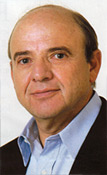Wed, 07/18/2018 - 13:53
By Ted Wirecki, M.D. 
One of the interesting breakout sessions regarding TMS research in South America at the recent Clinical TMS Society (CTMSS) meeting in Brooklyn, NY was moderated by Michael Kabar, MD. Dr. Kabar is uniquely suited for the role, having trained, taught and practiced in the US for almost twenty years before returning to Peru in 2010 to open a busy TMS clinic.
Matias Bonanni, MD from Argentina presented his study of treating patients with autism spectrum disorder (ASD) with low frequency TMS. The Clinical Autism Report Scale (CARS) was the measurement instrument. While the study itself should be referenced for detail it was encouraging to see improvement from baseline following treatment - an average score of 39.14 at baseline compared to 25 following treatment. Dr. Bonanni reported that changes were quite different from patient to patient and that a study with a larger sample was needed, though resources for TMS research are quite limited in Argentina.
There was a presentation from Paul Croarkin, DO, the current President of the Clinical TMS Society, in collaboration with several Brazilian psychiatrists in an open label study using intermittent theta burst stimulation (iTBS ) for autism spectrum disorder. The trial consisted of 15 sessions of iTBS - 5 per week for 3 weeks. Four different rating scales were used, and they demonstrated significant improvement both at treatment completion and at a three month follow up. With additional research regarding protocols and target selection it seems possible TMS will become a useful modality for treating this cruel disorder.
Alexander Lyford-Pike, MD from Uruguay presented his research on the effectiveness and safety of accelerated TMS for treatment resistant depression. He treated 32 patients whom he divided into 3 groups. Group one (1) receiving 1900 to 4200 stimulations per day, group two (2) receiving 4000 to 8000 stimulations per day and group three (3) receiving 12000 stimulations per day. Group 1 had a response rate of 78% and remission rate of 56%, group 2 had a response rate of 73% and remission rate of 54%, and group 3 had a 100% response rate and 83% remission rate. This study begs for replication with a larger sample size but is suggestive that for accelerated TMS to be effective the dose needs to be tripled rather than doubled. No complications or side effects except for mild headache were reported.
It generally appears that the regulatory and liability climate in South America, while hardly lax, allows for clinical research and proof of concept studies more easily than in North America. The implementation of these is limited by funding issues, with some of the research described above literally funded out of a doctor’s personal family budget. Many of us were surprised to learn how broadly TMS is used in South America. For example, there are more than 400 devices being used regularly in Brazil alone.
I would like to extend a genuine thank you to Dr. Kabar for pulling this breakout session together. It was well attended and appreciated by our members.